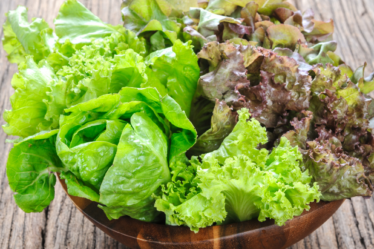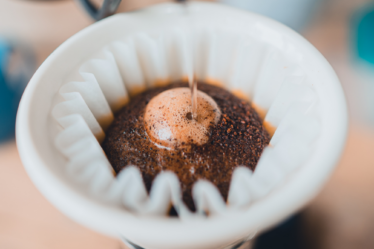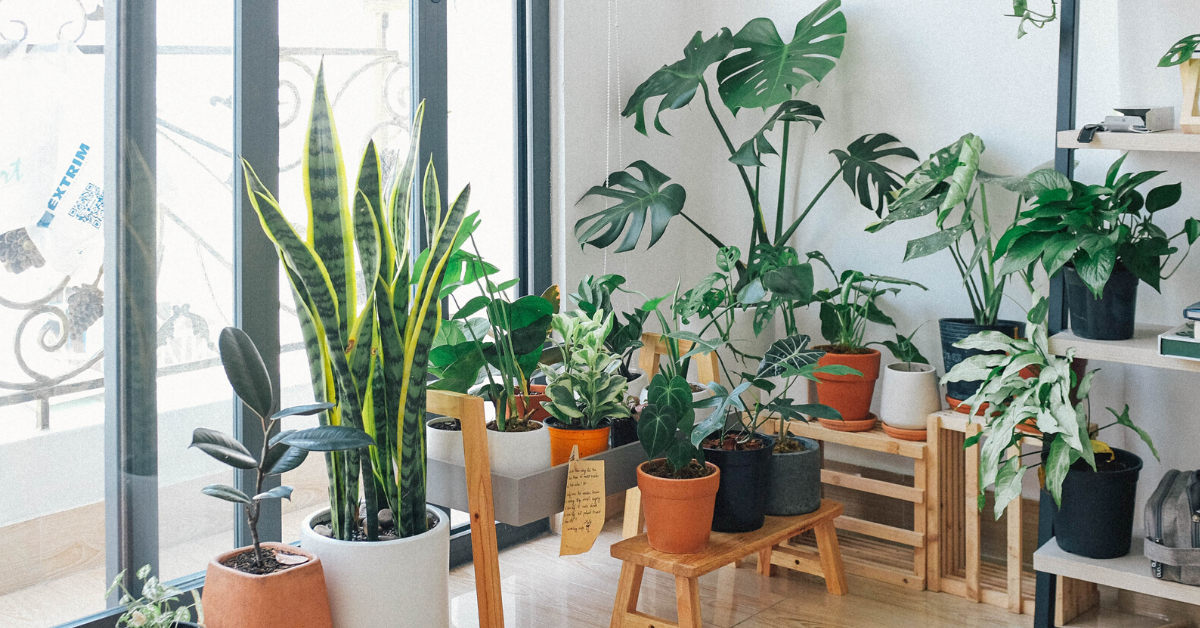
With such a fun name, sugar-snap peas are indeed a hardy vegetable for the cooler months of the year. The generic name of this vegetable is Pisum Sativum var macrocarpon, and this very healthy vegetable can be harvested and eaten entirely in its pods. Great for raw salads, stir-fried with other vegetables or in curries, sugar snap peas are a healthy source of nutrition for everyone.
These vegetables are rich in carbohydrates, protein and fiber, but also contains a healthy source of potassium, iron and Vitamin C. In fact, a generous serving of sugar snap peas in our meals can take care of a lot of our nutritional needs every day.
Growing sugar snap peas isn’t hard, either. This is an easy vegetable to plant in a garden, in a raised garden or even in a container. Anyone can do it, even a complete beginner.
Is it Hard to Grow and Take Care of Sugar Snap Peas?
In one word, no.
Sugar snap peas basically take care of themselves after they’ve been planted once. As a beginner, if you can simply ensure proper soil conditions, weather and fertilizer in your garden, most kinds of sugar snap pea plants will grow perfectly under your care. As mentioned before, these plants aren’t at all difficult to maintain, as they mostly grow up naturally under the right conditions.
Only one or two of these plants would be enough to produce a good amount of sugar snap peas every season. For each season, only a few plants should ideally be adequate for your family and friends.
Sugar snap peas can be also grown in large containers indoors as these plants do not grow very high or very wide. They almost resemble a bush-like houseplant that is attractive and easy to maintain; only upon close inspection can anyone see the sugar snap peas hanging from the plants.
Can You Grow Sugar Snap Peas in a Container?
Most varieties of sugar snap peas can actually be grown in pots or containers.
Since these plants mostly grow in an organized bush, they can certainly be grown in pots or containers. They neither spread too wide or grow too high and can also be placed in a container on a balcony or beside a window with plenty of sunlight.
The containers used for growing sugar snap peas need to be at least 12” in width and diameter and equally deep. The containers should also have a good drainage system as it is important for sugar snap peas to grow in soil that is moist but not wet.
Not all varieties of sugar snap pea plants require the support of a trellis or a teepee to grow. However, if you are growing these plants in a container placed on a balcony, the rails can be used as support for the plants to expand upwards.
In a very little space, even indoors, sugar snap pea plants can definitely be grown in a pot or a container.
How Can You Grow Sugar Snap Peas at Home as a Beginner?
• Planting:
Sugar snap peas are cool weather vegetables. They need to be planted as early as February for the plants to be ready for harvesting on time. However, this also depends on the region you live in and the soil quality, especially how much the temperature of the soil stays during the day and at night.
The sugar snap pea seeds need to be planted as soon as the soil is ready in spring. Seeds should be ideally planted indoors or in small pots, to be transported to a garden or a large container outside only when the seedlings are visible. This makes it easier to control the temperature of the soil when the seeds are planted indoors or in small containers.
On the other hand, if you are planting seedlings or planting your seeds directly in the garden, they need to be spaced accordingly and will take around 8 to 10 days for seedlings to sprout. If the weather suddenly gets chilly or frosty after the seeds have been planted, they need to be covered and the soil needs to be artificially warmed to protect them.
• Soil:
Almost all kinds of soils are good enough for sugar snap peas as long as they are well-drained. Sandy, heavy clay or loamy – these plants can grow in most kinds of soil, making this vegetable easy to grow in most regions all over the world.
At the same time, sugar snap peas grow the best in soil that has a pH level between 6 and 7.5, i.e. slightly acidic soil. If your soil is tested and not found to be acidic enough, it might be a good idea to increase the acidity of the soil by adding special manure and compost. • Sunlight:
Although sugar snap peas are mainly cool weather vegetables, they can survive in both full sun and partial shade. In fact, they can adapt to the climate of the region they are growing up in.
Sugar snap pea plants, at best, needs around four to six hours of direct sunlight every day, as well as a few hours of indirect heat and sunlight. If you live in a cool region, your sugar snap peas will grow best in a part of the garden that gets the most sunlight all day long. On the other hand, for a warmer climate, this much exposure to the sun isn’t necessary.
• Watering:
Sugar snap pea plants need to be watered regularly so that the soil is moist evenly at all times. Moist soil is extremely important for these plants to grow properly and produce healthy fruits, and water should be added according to the climate and the soil’s needs.
• Fertilizer:
When the seedlings or seeds are planted, a little nitrogen-enriched fertilizer can work wonders for the plants. This needs to be done before planting the seeds so that the soil is properly prepared for the roots when they grow.
Sugar snap pea plants take nitrogen from the air and change it into their food. This is why, to increase the yield from these plants, it is important to add nitrogen-rich inoculants to your plants, which is a powdery kind of material that helps with the conversion.
• Spacing:
Sugar snap pea plants need to be spaced at least 1” apart from each other, with a minimum of 18” to 24” between each row. When planting these vegetables in a container, one plant per container is enough as they usually grow in bushes.
• Temperature:
The best temperature for sugar snap peas would be somewhere around 45° or higher than that. This means that it is right to wait for the last frost to pass to start planting these seeds. and 75°. They can tolerate cold weather, and actually improve their taste with every frost.
• Support:
Sugar snap pea plants are mainly of two varieties: bush-type and pole type. Although these two varieties are completely different in appearance, both types need a specific kind of support while growing.
Bush pea plants only grow up to 3 or 4 feet in height and are the ideal types to grow indoors in a container, but they still need something to hold on to while growing. If placed in a balcony or terrace, they spread themselves by holding on to the rails or walls. If a single pole is placed along with the roots of these plants, they have an easier time growing to their true height and give their best possible yield.
Pole-type sugar snap pea plants, on the other, can reach a height of 8 feet or more, and they definitely need the help of support. These types of plants need a sturdily built trellis to grow up and produce a good number of fruits, not just a pole dug into the ground. Trellises, wire nets or wire mesh wrapped around a teepee, thick twines and strings – these options also work great with pole-type climbing pea plants.
• Weeding and Pest Control:
For most varieties of sugar snap pea plants, the most common disease is wilting of the plant caused by Fusarium fungus, in which the wilting leaves – especially in the lower part of the plant – wilts, yellows and eventually dies.
Fusarium wilting is likely to occur when the soil is cold, wet and moister than what’s necessary for sugar snap pea plants. If the soil in your area doesn’t drain well, this can be a regular problem that will gradually kill the entire plant and severely damage production.
In order to reduce the chances of this deadly disease of sugar snap pea plants, organic fertilizer can be mixed into the soil to improve its drainage. If the soil is properly drained, Fusarium infection shouldn’t ideally be a problem for your pea plants.
• Harvesting:
Sugar snap peas mature fully around 6 to 7 days after flowers appear on the plants, which is also when they are ready for harvesting. Mature peas should be picked at least once every day before they become too mature and lose their sweet taste and fibrous texture. If the peas stay too long in the plant after they have matured, they will eventually wilt and fall off.
Picked sugar snap peas can be stored for up to 2 weeks, tightly sealed in a plastic bag in the refrigerator. Therefore, if you aren’t yet ready to eat your entire harvest, they should still be harvested and stored in the refrigerator.
Frequently Asked Questions (FAQs) About Growing Sugar Snap Peas at Home• Can You Grow Sugar Snap Peas from Store-Bought Peas?
It is definitely possible to start your very own sugar snap pea garden with some store-bought ones, which you can do by storing the seeds from the peas.
The seeds collected from the store-bought peas can be soaked overnight in plain water to speed up their germination process. Afterwards, the seeds can be directly planted in the ready soil or a small pot for seedlings to appear. This is possible to achieve with most types of sugar snap peas that you can find in your local grocery.
• What Can I Plant Next to Sugar Snap Pea Plants?
The perfect companion plants for sugar snap peas, i.e. the plants that are most profited from planting next to these plants, would be spinach, radishes, lettuce and similar salad green. Potatoes and cucumbers can also be a good option for vegetables to grow beside these plants, but plants with extremely pungent-smelling yields such as garlic or onion should be avoided and kept far away.
In you are planting sugar snap peas in containers, it will be better not to crowd out the soil with any companion planting.
• How Many Pea Seeds Will I find in a Single Sugar Snap Pea Pod?
When fully mature, a single sugar snap pea might reach up to 3” in length; each pea can contain from three to eight seeds inside them.
• How Tall Should a Sugar Snap Pea Trellis Be?
While bush-type sugar snap pea plants only grow up to 3 feet in height, the pole-types can grow up to 8 feet. For the latter type of plants, the trellis built should be at least 9 feet in height and wide enough for the plant to expand in all sides. • How Deep Can Sugar Snap Pea Plant Roots Go?
Sugar snap pea plants grow medium-deep roots, i.e. their roots, at best, go 18” to 24” deep into the soil. This is why it is
possible to grow these vegetables into medium-sized containers and pots if they are just a little over 24” in depth.
• Should Pea Seeds Be Soaked Before Planting?
Soaking sugar snap pea seeds in plain water overnight or slightly longer actually helps to speed up the germination process. This is actually an important step in planting this variety of peas from seeds.
Perfect with green salads, curries and even raw, sugar snap peas are delicious and nutritious. They are easy to grow as well; in fact, it is said that sugar pea plants take care of themselves after the initial planting and all you have to do is to harvest the plants every day for fresh yield. Therefore, there shouldn’t be any doubt that these nutritious vegetables should be an important part of your garden.


